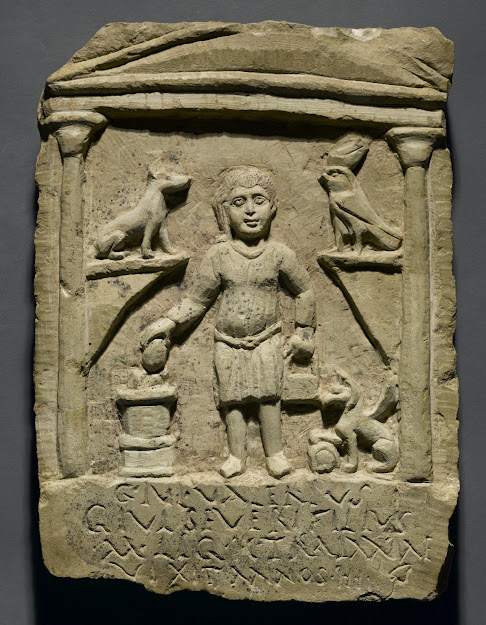Cultural mingling in the Roman provinces of the 3rd century CE
This funerary stela shows a boy who died when he was three. His father, a Roman soldier, was stationed near Alexandria. His Egyptian mother is not mentioned. The child’s costume and pose are Roman, but his long sidelock of hair is traditionally Egyptian, as are the jackal god Anubis and the falcon god Horus above his head. The griffin in the lower right corner represents the classical goddess Nemesis, who controlled life and death and appears to show Greek influence. In his left hand is a bucket perhaps a type of situla used as a libation vessel. With his right hand he grasps a circular object, perhaps an offering he is about to place on the small altar. He is probably intended to represent Horus. The Latin inscription provides the boy's name and age at death. Extensive but faint traces of bright red paint remain on the hatched background. It is thought this monument was recovered at Terenouthis, Egypt, located in the western Nile Delta, about 70 km northwest of Cairo. Terenouthis flourished thanks to the trade of wine and salt. The northeastern sector of the site contains a very large necropolis dating to the Graeco-Roman and Coptic periods.
Image: Funerary Stela of C. Julius Valerius, Roman, 3rd century C.E. Limestone at the Brooklyn Museum, courtesy of the Museum (CC BY)




Comments
Post a Comment